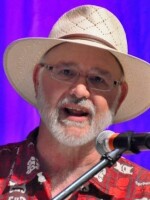Officer Chris Laughlin works in the Community Services Section of the Springfield Mo. Police Department, and oversees the city’s Neighborhood Watch Program.
“You know, the neighbor helping neighbor. We’ve seen the places where individuals have requested a Neighborhood Watch and have gone through the precursors that they need to set up the Neighborhood Watch, we found that crime has started to drop because it gets known in a Neighborhood Watch area that “While I may not call the police, my neighbor will call the police on you.” With the Neighborhood Watch, we also have a sub-category called Apartment Watch, and the same principles apply. Between the 2 groups, we have 24 Neighborhood/apartment Watch groups sanctioned by the City of Springfield.”
Some names of Springfield Neighborhood Watch groups reflect and area of residence, such as Brentwood, Bradford Park, Ravenwood, or The Villages at Nathanael Greene. Other names are perhaps more declaratory: The First mighty Three; Lakeside Troopers; No More Tolerance. According to the Neighborhood Watch webpage through the Police Department link at springfieldmo.gov “Neighborhood Watch is a voluntary program organized by concerned citizens to reduce crime in their communities. Working with local law enforcement agencies, citizens can learn when and how to report suspicious activities, assist in property identification, conduct home security surveys, and implement home security measures and precautions.”
Crime Prevention Officer Chris Laughlin says, while any resident can join a Neighborhood Watch group, it takes neighbors organizing to start a program: “Once an individual rallies up the troops, so to speak, and says Lets Start a Neighborhood Watch, they will attend at least 1, 4 hour training session we host on a quarterly basis”
Phase 1 of the training focuses on the overall operations of the Springfield Police Station. In phase 2, citizens complete a self-assessment of their homes; make improvements that reduce their chances of being burglarized; and learn about the CEPTED program. (Crime Prevention Through Environmental Design) In phase 3, citizens organize to form an active Neighborhood Watch Group, meeting minimum requirements to receive new Neighborhood Watch signs to be placed on streets in the area.
Carol McCarthy rallied the troops in her area of the city. In April 2014, following the tragic death of 10 year old Haley Owens of Springfield, McCarthy formed the Greater Parkcrest Neighborhood Watch, which later became the Greater Parkcrest Neighborhood Association. “One of the things we learn right off is Description. That you can’t just say, I Saw Someone Drive away in a White Pickup, there’s thousands of those on the road. Were there decals on the vehicle? Did you get a license number? Was it a large or small white truck?”
Carol McCarthy remembers her first steps taken to form a Neighborhood Watch group: “I looked on the website first, found the link for Springfield Police and looked up Neighborhood Watch. www.springfieldmo.gov When I filled out the forms I learned we needed 45-50 people and a place to meet. I did flyers around the neighborhood and it seemed like it took off. I’d get calls asking I’m Interested What Can I Do? We went to Ridgecrest first, had 45 members and all of a sudden we had Block Captains and were on a roll.”
Carlo McCarthy says the Neighborhood Watch Program is a valuable tool for community betterment and community safety: “I think it’s an important program and if we can do anything to help a child, adult or anyone to be safe, it’s an important program. It’s worth the time invested. You can’t just want safety, you have to participate.”
Springfield Crime Prevention Officer Chris Laughlin reminds listeners of the Neighborhood Watch motto: “If You See Something, Say Something.”









